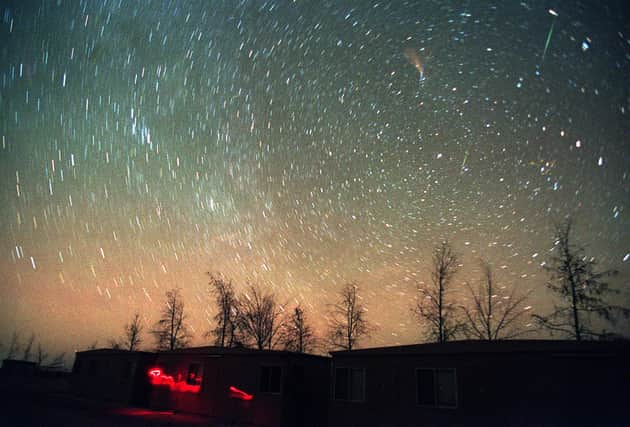Leonids meteor shower 2023: when is the peak in the UK, how best to see them - what are they?


Meteor showers are one of the night sky's most breathtaking spectacles, with the Leonids standing out as a phenomenon that has left observers in awe throughout history.
The Leonids could put on a spectacular celestial display later this month; gaze upwards and - if the weather remains clear - you could be treated to hundreds of shooting stars an hour as the Earth intersects the orbit of the comet 55P/Tempel-Tuttle.
Advertisement
Hide AdAdvertisement
Hide AdHere is everything you need to know about the spectacle, including how to see the meteor shower.
What is the Leonid meteor shower?
The Leonid meteor shower is an annual meteor shower that occurs in November when the Earth passes through the debris trail left behind by the comet 55P/Tempel-Tuttle.
When the Earth crosses the comet's orbital path, the small particles of dust and debris left by the comet enter the Earth's atmosphere at high speeds and burn up, creating bright streaks of light in the night sky, which we call meteors or "shooting stars."
The name "Leonid" comes from the fact that these meteors appear to radiate from a point in the constellation Leo.
Advertisement
Hide AdAdvertisement
Hide AdThe Leonid meteor shower is known for producing some of the most spectacular meteor displays in history, with periods of enhanced activity known as "Leonid storms" that can result in hundreds or even thousands of meteors per hour.
However, the intensity of the Leonid meteor shower can vary from year to year, with occasional outbursts of activity during the years when the comet is near perihelion (its closest approach to the Sun).
In some years, the Leonids can produce a few dozen meteors per hour, while in other years, they can produce hundreds or even thousands of meteors per hour during a storm. The last significant Leonid storm occurred in 2001.
What's the best way to see them?
To observe the Leonid meteor shower, you should find a dark location away from city lights, lie back, and look up at the sky. Light pollution from urban areas can greatly diminish your ability to see meteors. So, the first step is to find a dark location away from city lights.
Advertisement
Hide AdAdvertisement
Hide AdOnce you're in your dark viewing location, give your eyes at least 20-30 minutes to adapt to the darkness. Avoid looking at any bright screens or lights during this time.
The best time to view the Leonids is typically in the predawn hours when Leo is high in the sky. Late-night or predawn skywatching can get cold - especially in November - so make sure to dress warmly and bring blankets or sleeping bags to keep comfortable.
Be patient, as meteor showers can have periods of inactivity followed by bursts of activity. Meteor showers are unpredictable, so keep watching the sky for extended periods to increase your chances of seeing meteors.
The Leonid meteors appear to radiate from a point in the constellation Leo. Consider using a stargazing app on your smartphone or a star chart to help identify the location of Leo and the radiant. However, don't focus too much on the radiant itself; meteors can appear anywhere in the sky.
When is the peak of the shower in 2023?
The Leonids technically began this year on 6 November. They are expected to continue through to Thursday 30 November, though they will peak on the night of Friday 17 November.
Comment Guidelines
National World encourages reader discussion on our stories. User feedback, insights and back-and-forth exchanges add a rich layer of context to reporting. Please review our Community Guidelines before commenting.
